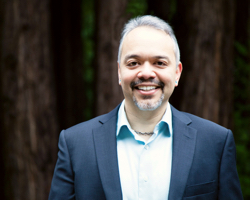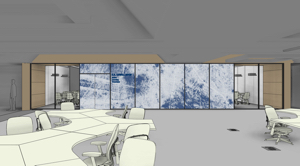Saws are whirring on an innovative project to reshape undergraduate science education. Construction crews are converting the Science & Engineering Library’s S.H. Cowell Room into a 99-seat active learning classroom. The classroom, a first of its kind for our campus, is set to open next fall and is a significant first step in a multi-phased renovation for this library.
Much like the rejuvenation of the McHenry Library six years ago, the campus is looking to invest in our Science & Engineering Library so that it can meet the challenges of a larger student body and a campus community living in a digital age.
A reimagined Science & Engineering Library has been a priority in our Campaign for UC Santa Cruz, and fundraising success will be instrumental in moving this project forward. The campus is taking a phased approach so that we can sooner increase study rooms and collaborative workspaces, add a café, information commons, and improve the infrastructure and more.
The classroom project highlights the library’s potential and importance in our academic mission. Nearly three years in the making, it builds on a collaboration between the University Library and the Division of Physical and Biological Sciences, and is another example of our campus’s extraordinary commitment to student learning and academic success.
Research has shown that active learning increases student success in science, engineering, and mathematics, and is often a better approach than large lectures. One 2014 study showed that “average examination scores improved by about 6 percent in active learning sections and that students in classes with traditional lecturing were 1.5 times more likely to fail than were students in classes with active learning.”
This project got its start two-and-half years ago, after UC Santa Cruz received a $1.5 million grant from the Howard Hughes Medical Institute to support an innovative effort to increase the number of students graduating with science degrees.
Already, we have a strong record when it comes to students earning the degree that drew them to UC Santa Cruz. The STEM persistence rate is 57 percent overall—above the national average of 40 percent—and 51 percent for underrepresented minority students, well above the national average of 20 percent. Still, we can and should do better.
Another major project where the library has taken the lead for our campus is in the creation of additional study space for our students. With the growth in California resident students on our campus, as well as throughout the system, we have an acute need for additional quiet and group study space for our students. The Science & Engineering Library was able to create a significant amount of study space by consolidating the collection to one focused on the most highly used titles. All titles removed are available to our campus online or via interlibrary loan.
Students have welcomed this additional space. The floor was filled with students—nearly 700 at one point—cramming for their final exams.
I encourage faculty interested in learning more about active learning to take part in the lunchtime STEM Active Learning Seminar, and to visit our newest classroom when it opens next fall.
More information about the collection project can be found online.




